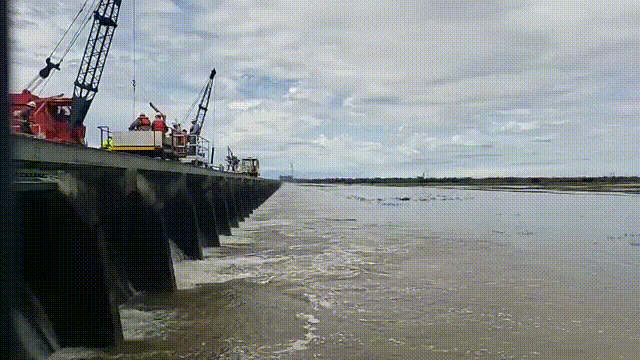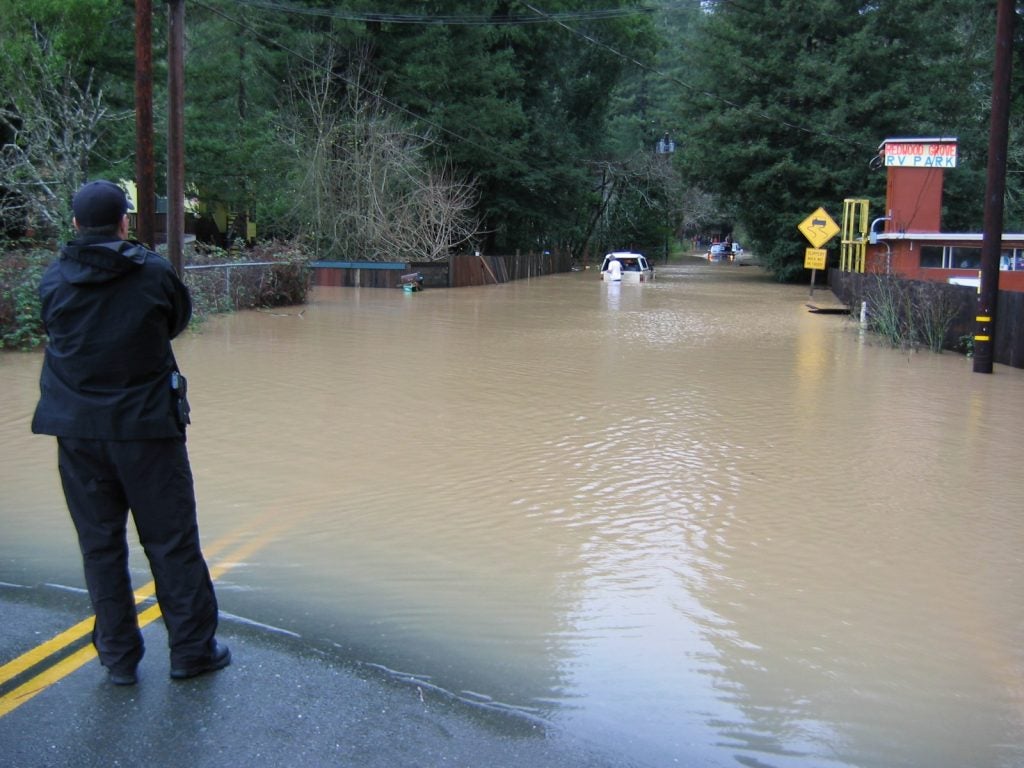Extreme wet weather in Louisiana and California highlights urgent need for newer, smarter strategies
Coauthored by Ann Hayden and Steve Cochran
It’s not often that communities in California and Louisiana face similar water challenges. California is better known for having too little water and Louisiana too much – both challenges exacerbated by climate change.
But record-setting wet winter weather led both states last week to release significant amounts of water from reservoirs and rivers to prevent flooding, underscoring the need for new approaches to build climate-resilient communities across the country.
Unprecedented water levels in Louisiana result in spillway opening, again
In Louisiana, more than 100 people came out to watch the opening of the Bonnet Carré Spillway. It marked the first time the Army Corps of Engineers has opened the spillway two years in a row.

Located about 20 miles upriver from New Orleans, the spillway was designed to alleviate pressure on Mississippi River levees and prevent flooding. The spillway has been opened only 13 times since it was built in 1931. Three of those times have been in the last four years, reflecting the frequency of more extreme weather. This latest opening comes amid the wettest winter in the Mississippi Valley in 124 years.
Of course, opening the spillway is crucial to protecting communities and river navigation. The downside is that, in addition to releasing water, the spillway releases approximately 9 million cubic yards of sediment into Lake Pontchartrain – sediment that would be put to much better use rebuilding Louisiana’s coastline, which is disappearing at a rate of one football field every 100 minutes. Unprecedented water levels across the country stress the need to think more holistically and broadly about flood management to build resilience. Share on X
Louisiana’s Coastal Master Plan is working to remedy this problem through large-scale sediment diversions along the Mississippi River. These projects, currently in design and permitting stages, will capture the sediment that we are currently wasting and instead use it build new wetlands, at the same time reducing pressure on the levees. This multi-benefit approach to flood management will help to minimize impacts on coastal communities while maximizing the land-building power of the river.
Record-setting rain and snow in California lead to emergency declaration
California could gain from a similar multi-benefit approach to managing its rivers in response to more extreme weather.
This winter, record-setting snowfall has made it hard to imagine that just months ago the state was reeling from tragic wildfires amplified by dry conditions.
In Northern California, recent flooding on the Russian River led to an evacuation of the wine country town of Guerneville last week. Dam gates were opened on Lake Shasta, the state’s largest reservoir, as well as Folsom Lake and the New Bullards Bar Dam on the Yuba River. Sacramento blew past its daily rainfall record, resulting in flooding in the Northern Sacramento Valley. All told, the governor declared an emergency in 26 counties.

Similar to the “wasted” water in Louisiana, these downpours in California represent a missed opportunity to allow floodwater to spread out and slow down across the Sacramento Valley landscape, mimicking natural flows and providing various ecosystem benefits including excellent rearing ground for juvenile salmon.
This more holistic water management approach would allow farmers to cultivate rice and other crops during the spring and summer, provide habitat for wild birds, reptiles and other fauna in the fall, and give food to birds and native fish species in the winter.
In addition, in a state where groundwater overdraft has become a crisis issue, reactivating floodplains would also allow groundwater aquifers to be recharged, helping to buffer supplies in times of scarcity.
Applying these lessons now and across the country
These recent experiences in California and Louisiana demonstrate that our old thinking about building levees to control rivers is past its prime, especially in an era of more extreme weather.
The dramatic events of the last week underscore the need to think more holistically and broadly about flood management around the country. Simply managing water to prevent floods is no longer enough. We can and should strive to achieve more, using this extra water as an opportunity to restore the critical ecosystems along the Louisiana coastline and in the Sacramento-San Joaquin Bay-Delta.










